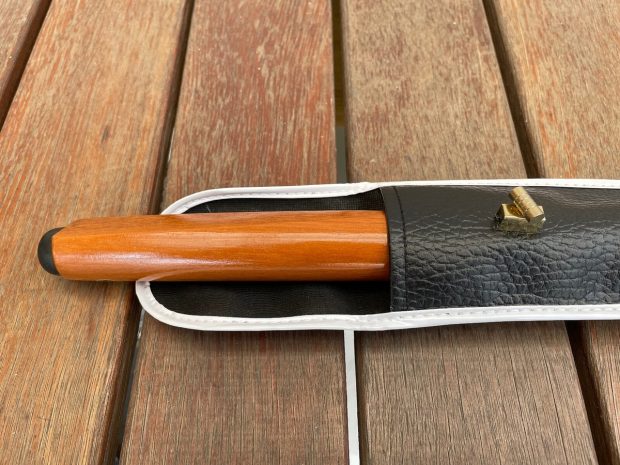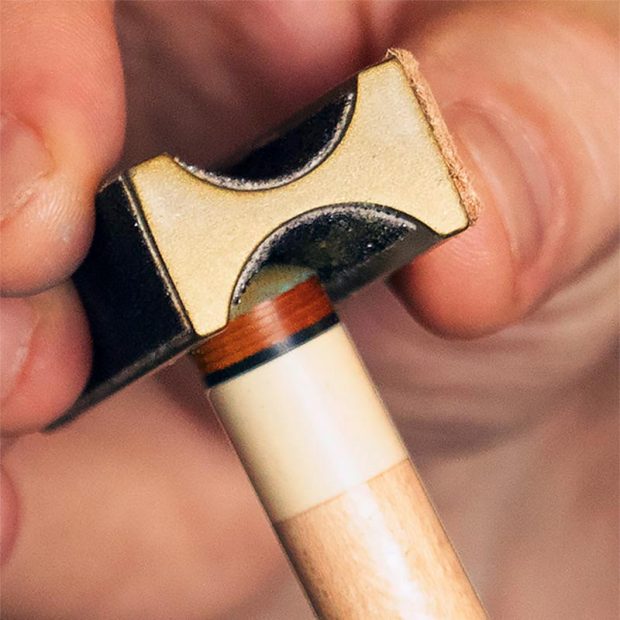That first pool cue feels special; it’s smooth, balanced, and makes every shot feel more controlled. And to keep it that way, you’ll want to give it a bit of care.
A well-maintained cue not only lasts longer but also helps your game stay sharp. On the flip side, neglecting it can throw off your shots and slow down your progress. The good news is that taking care of your cue doesn’t require much, just a few simple habits that keep it straight, smooth, and ready to perform every time you step up to the table.
Start with a Reliable Case

Your cue is an investment in your game, and the easiest way to protect that investment is by keeping it in a quality pool cue case. A good case safeguards your cue during storage and travel, shielding it from scratches, dents, moisture, and accidental bumps. It also gives you peace of mind knowing your gear will stay in prime condition for years.
However, with a wide range of pool cue cases on the market, selecting the right one for your needs can be challenging. Here’s everything you should consider:
- Material & Durability: Leather offers a timeless look and can last for years with proper care, but it is more expensive and requires upkeep. Vinyl gives a similar appearance at a lower price and is easier to maintain, while nylon is lightweight, durable and highly resistant to moisture, making it ideal for players on the move.
- Inner Lining: The inside of the case is just as important as the outside. Soft cloth or felt prevents scratches, while foam padding absorbs shocks and keeps the cue snug and secure, even if the case is bumped or dropped.
- Size & Capacity: A single case is enough for casual players, while a double case suits those with a playing cue and a break cue. For professionals or collectors, larger cases with room for three or more cues plus accessories are the best option.
- Design & Aesthetics: Your case can reflect your personality as much as your cue does. Traditional designs in leather or vinyl give a polished, classic style, while modern cases feature sleek shapes and bold colours. Many players even choose customised options with monograms or unique patterns.
- Protection Level: Hard pool cue cases provide maximum defence against drops and knocks, though they are heavier. Soft cases are lighter and easier to carry but offer less impact protection.
- Portability: Comfortable handles, padded shoulder straps or even backpack-style straps make a case easier to transport. A compact design also helps when moving through crowded areas or storing it at home.
Choosing the right pool cue stick case means your cue stays protected, travels easily and looks just as sharp as your game.
Keep It Clean
A clean cue feels smoother in your hands and helps your game flow better. After each session, give the shaft a quick wipe with a soft, dry cloth to clear chalk dust, sweat, and oils that accumulate during play. For a more thorough clean, a cue-specific cleaner is best to remove stubborn grime without damaging the wood. Avoid harsh products like polish, window spray or alcohol-based cleaners, as they can dry out the finish. Even a slightly damp cloth can freshen up your cue between games.
Use Joint Protectors
Joint protectors are small but mighty when it comes to joint care. They shield the joint pin and shaft threads from damage, which means your cue connects smoothly every time you assemble it. They also seal off the unfinished end of the shaft, keeping excess moisture out, which is a big plus if you want your cue to stay straight and last longer. Whenever your cue isn’t in play, pop on joint protectors. It’s a simple step that keeps your cue in playable condition for years to come.
Keep the Tip in Shape

The cue tip is where the magic happens; it’s the only part that makes contact with the ball, so its condition can make or break your shots. Tips actually play better when a little worn, as the rough texture helps them hold chalk. Just make sure the shape stays right. Most tips perform best with a convex curve, though it’s smart to follow your cue maker’s recommendations.
It’s also a good idea to chalk lightly before each shot to add grip and control. Avoid grinding the chalk into the tip; a gentle rub across the surface does the job without creating messy residue. If the tip has warped from moisture or worn down to the thickness of a dime, it’s time for a replacement. A well-shaped, properly chalked tip gives you the control you need for spins, draws and accurate strikes.
Inspect for Damage Regularly
Giving your cue a quick check every so often can save you from unpleasant surprises mid-game. Even durable cues with graphite shafts or metal ferrules can suffer damage if mishandled. Look out for warping in wooden cues, slight bends, cracks or chips that could affect performance.
Dropping your cue on a hard floor, even just once, can cause serious issues that shorten its lifespan. If your current stick shows signs of heavy damage and repairs aren’t practical, it may be time to upgrade to a sturdier intermediate version.
Maintain the Wrap
The wrap on your cue helps you keep a firm grip while playing. Over time, hand sweat and dirt can wear it down, making it less absorbent and causing your hands to slip. Whether your wrap is leather or Irish linen, watch for signs of wear. If your grip feels less secure, it is time to replace the wrap. Changing it every six months is a good rule of thumb for most players. This keeps your hands steady on the cue and helps maintain consistent, controlled shots.
Store in the Right Place
Proper storage is essential to keep your cue straight, safe and in top condition. Your storage solution should prevent warping by avoiding extreme temperatures and direct sunlight, reduce stress on the joints, and protect the cue from dust and accidental damage. Ideally, store your cue in a consistent environment around 21°C with 40–50% humidity. If using a wall-mounted rack, make sure the cue is perfectly straight and avoid placing it on racks installed on outside walls. For long-term storage, place the cue in a case vertically and leave it slightly open to allow airflow.








